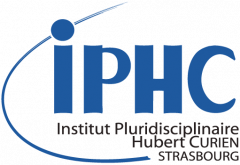In this seminar, I will begin by discussing the mechanisms of ageing, with a particular focus on telomeres. Specifically, I will examine how different environmental conditions during pre-and post-natal development affect telomere length and dynamics in the yellow-legged gull, Larus michahellis. I will present results from our recent studies investigating the role of maternal glucocorticoids, exposure to prenatal social stressors (e.g. predation risk) and microbiome development in influencing postnatal telomere dynamics and telomere repair mechanisms. For example, our results suggest that mothers can increase telomere length in their offspring by moderately increasing the amount of glucocorticoids (i.e. corticosterone) in their eggs. However, complementary evidence suggests that endogenous glucocorticoid production in response to stressors, such as predation risk, comes at the cost of loss of telomere length. I will also show how the development of the gut microbiome early in life is related to telomere length in the early postnatal period. In the second part of the seminar, I will focus on a different animal model, the Mediterranean field cricket, Gryllus bimaculatus. I will use this invertebrate species to illustrate the links between sex, plasticity and ageing. I will highlight several examples of how the adult sociosexual environment can induce plasticity in the allocation strategies between traits under pre- and post-copulatory sexual selection, and the implications of such changes for lifespan and ageing rates.Topic: Zoom meeting – DEPE animation scientifique – BEEPS Join Zoom Meetinghttps://cnrs.zoom.us/j/92785456777?pwd=NU1FQzdwVTFERXZqMG5LRXJRSUlQZz09 Meeting ID: 927 8545 6777Passcode: LT1fEU
https://indico.in2p3.fr/event/31788/
Début : 25/01/2024 à 11:00
Fin : 25/01/2024 à 12:00
Prochains évènements
Retour à l'agendaJournée scientifique IPHC
Amphi Grunenwald https://indico.in2p3.fr/event/33637/
Journée Technique Circuits Imprimés CNRS & Würth Elektronik PCBs
Rendez-vous le jeudi 17 octobre 2024, à partir de 9h00, à l'IPHC de Strasbourg pour une journée technique en partenariat avec Würth Elektronik France PCBs, expert fabricant allemand de circuits imprimés depuis 1971. Ouverte à tous, experts comme généralistes internes au CNRS ou non, cette journée sera l'occasion de se former sur la conception et la fabrication de circuits imprimés, éléments essentiels au développement d'une carte électronique. Elle se déroulera sous forme de présentations dont vous trouverez le programme sous la rubrique "ordre du jour". L'horaire des présentations est donné à titre indicatif et pourra être adapté en fonction du timing et de la demande des participants. Les présentations aborderont des sujets très variés tels que la conception et la fabrication de PCBs multicouches rigides et souples, les matériaux utilisés, les types de finition, les facteurs de coût, la dissipation thermique et autres technologies. Vous découvrirez aussi le site de configuration en ligne instantané de PCBs. En parallèle, l'équipe Würth Elektronik se tiendra à votre disposition, dans leur showroom roulant "WE mobil", pour vous apporter des réponses sur mesure et mettre à disposition des échantillons. Il sera stationné à côté du batiment 25 et accessible tout au long de la journée à votre convenance. Venez à tout moment pour poser vos questions et discuter de vos projets. Il ne vous reste plus qu'à remplir le formulaire d'inscription (onglet en haut à gauche). https://indico.in2p3.fr/event/33291/
